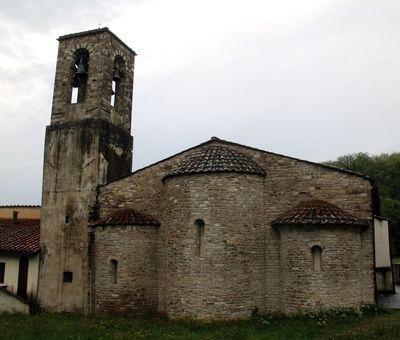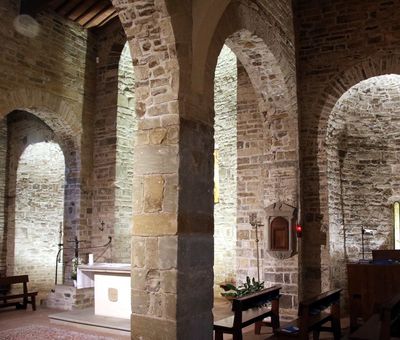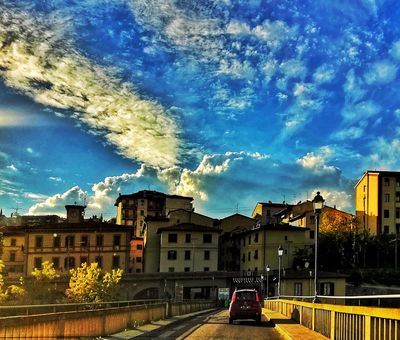Churches first
The Rignano territory is awash with sacred buildings: such a concentration of old churches is hard to find elsewhere in Tuscany. And indeed, it seems that here the churches were built before anything else, and the houses then built around them. San Leonino is probably one of the most archaic Romanesque parish churches in the Florentine countryside, along with San Lorenzo, with was erected on the ruins of a Roman fortification. The Monastery of Santa Maria, meanwhile, is one of the oldest religious houses in Tuscany, dating back to 780. Archaeological digs have confirmed that these religious sites came before the civic settlements: the first fortified structures appear in the year 1086.
The penitent painter
It's rare that we can admire a finished artwork and also what inspired it. During one of many restoration projects on the parish church of San Leolino, the fresco depicting the Coronation of the Virgin (Florentine school, end of the fourteenth century) was removed from the wall for the sake of performing the restoration work better. This revealed what was behind it: the preparatory designs that the artist had sketched out in red on the first, rough layer of plaster. This draft, when compared to the completed fresco, showed so many differences that the restorers were compelled to say that the artist "regretted his initial ideas."
The Madonna on the bridge
The history of Rignano sull'Arno is inextricably bound up with the history of its bridge. It has been debated endlessly whether it was constructed before or after the town. Over the course of the centuries the townspeople's relationship with their bridge has not always been smooth. From the start, there were signs of poor construction, and because of its less-than-ideal location, they considered moving it. But the identity of the town was by now so heavily invested in that bridge that it was originally called Ponte a Rignano, later becoming Rignano sull'Arno. The citizens have often feared for the durability of the bridge, and for this reason they dedicated it to the Virgin Mary, building a tabernacle with an image of the Madonna and Child.







